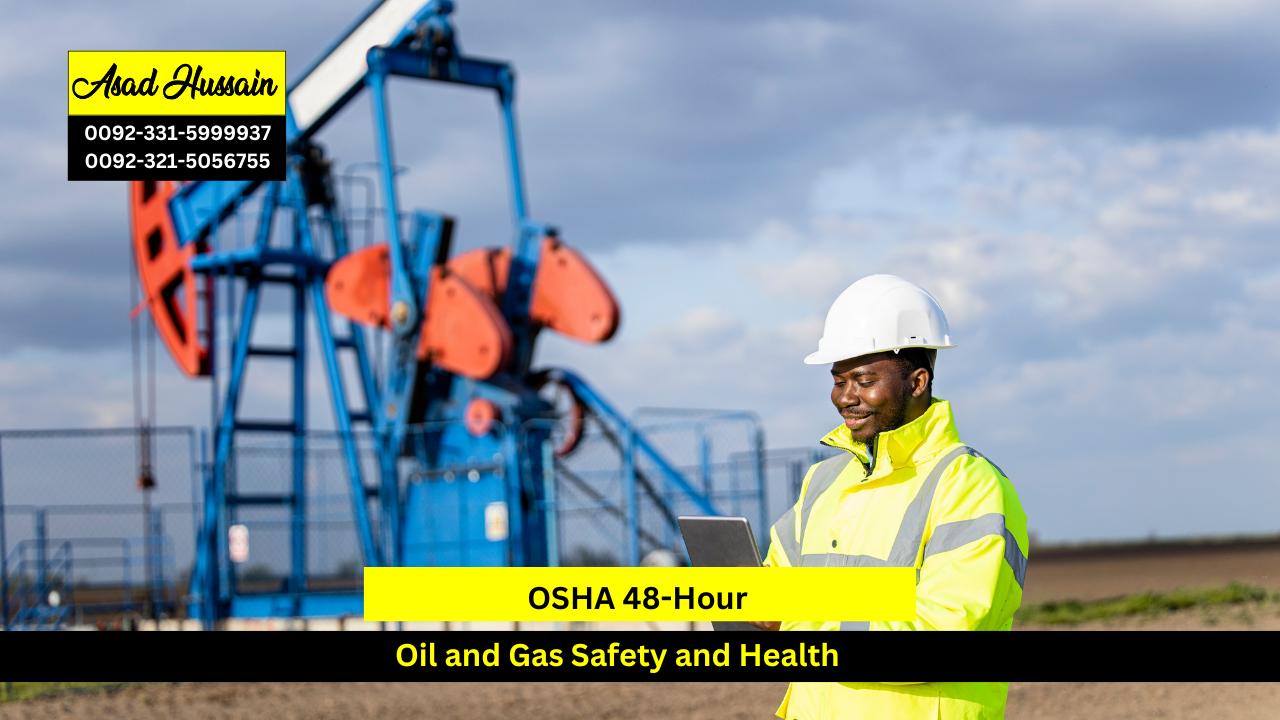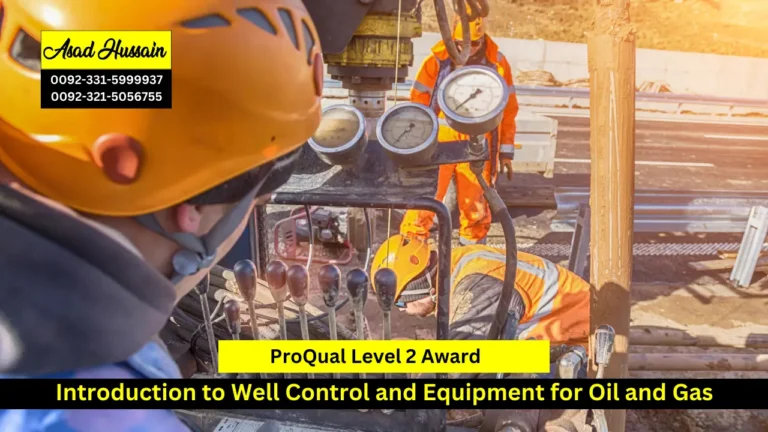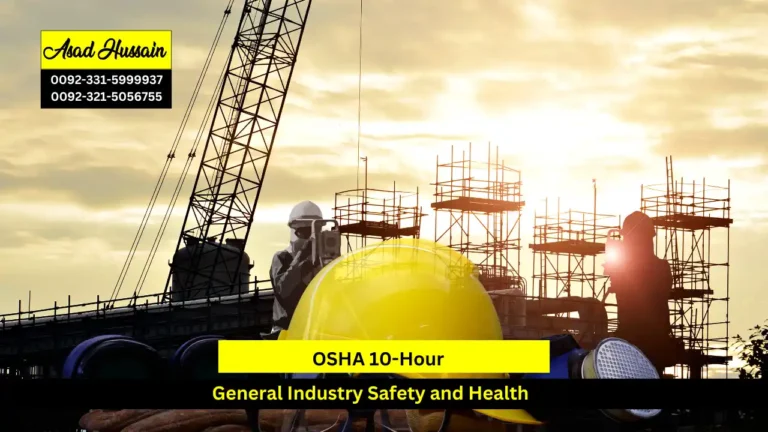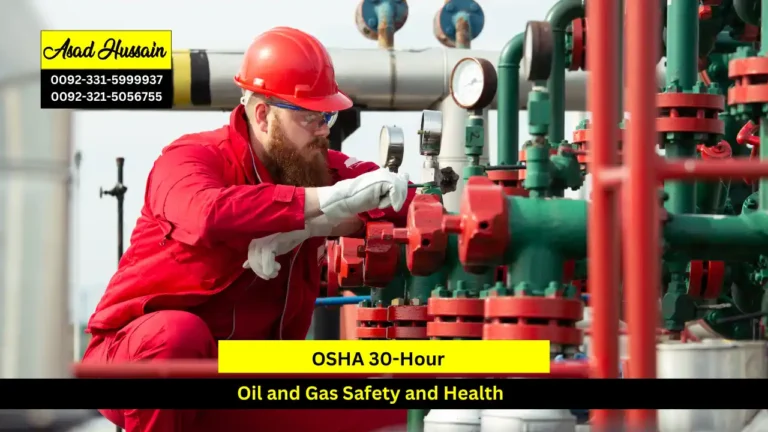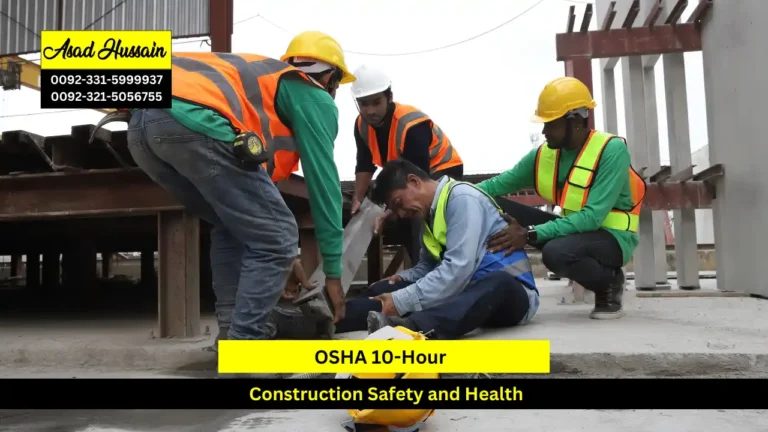The oil and gas industry is one of the most critical yet hazardous sectors in the global economy. The nature of this industry involves high-risk activities that demand stringent safety protocols to protect workers and prevent accidents. The OSHA 48-Hour Oil and Gas Safety and Health program stands as a cornerstone in enhancing safety standards within this high-risk field.
The OSHA 48-Hour Oil and Gas Safety and Health program is a comprehensive training course designed to address the unique safety and health challenges faced by professionals in the oil and gas sector. Administered by the Occupational Safety and Health Administration (OSHA), this program spans 48 hours and covers a broad range of topics essential for maintaining a safe working environment.
The OSHA 48-Hour Oil and Gas Safety and Health program is an essential investment for anyone involved in the oil and gas industry. By providing comprehensive training on safety and health issues, this program plays a crucial role in preventing accidents, promoting regulatory compliance, and fostering a culture of safety. For organizations and individuals committed to maintaining the highest safety standards, this program is a vital resource that helps ensure a safer and more productive work environment.
Program Highlights
Mandatory Units
- Introduction to OSHA and Oil and Gas Industry
- Regulatory Compliance in Oil and Gas Operations
- Hazard Identification and Risk Assessment
- Personal Protective Equipment (PPE)
- Process Safety Management (PSM)
- Emergency Preparedness and Response
- Health Hazards in the Oil and Gas Industry
- Environmental Protection and Sustainability
- Safety Leadership and Culture
- Incident Investigation and Reporting
- Contractor Safety Management
- Tools and Equipment Safety
Industry Experience
While the program is accessible to a wide range of professionals, having some background or experience in the oil and gas industry is beneficial. This experience could include roles such as field workers, safety officers, engineers, or other positions within the industry. Familiarity with industry operations and terminology will help participants grasp the course material more effectively.
Basic Understanding of Safety Practices
Participants should have a fundamental understanding of general safety practices and protocols. This might include knowledge of basic safety procedures, personal protective equipment (PPE), and general hazard recognition. If you lack this foundational knowledge, it may be helpful to complete a general safety training course before enrolling in the OSHA 48-Hour program.
Health and Fitness
Given the physical nature of many roles within the oil and gas sector, participants should be in good health and physically fit to handle the demands of the job. The course may involve practical exercises and simulations that require physical activity. A medical examination or fitness assessment is not typically required for entry, but being in good health is advantageous.
Employer Sponsorship or Approval
In many cases, participants are sponsored by their employers. It’s important to check if your employer requires you to complete this training as part of your job responsibilities. Some organizations may also require approval or support for you to take the course, especially if it is part of professional development or compliance with company safety policies.
Educational Background
There are no formal educational requirements to enroll in the OSHA 48-Hour Oil and Gas Safety and Health program. However, basic literacy and numeracy skills are necessary to understand and complete the course material, including reading safety regulations and completing written assessments.
Enrollment in Advance
Due to the specialized nature of the program, advance enrollment is often required. This ensures that participants have a reserved spot in the course and receive any pre-course materials or instructions. Be sure to check the specific enrollment deadlines and procedures for the program you wish to attend.
Language Proficiency
Since the course is conducted in English, participants should have a sufficient level of English language proficiency to understand the instructional materials and engage in discussions. If English is not your first language, you may need to demonstrate proficiency or seek additional support to ensure you can fully participate in the course.
Introduction to OSHA and Oil and Gas Industry
- Understand the role of OSHA: Describe the mission, objectives, and functions of OSHA in relation to workplace safety.
- Industry Overview: Gain a foundational knowledge of the oil and gas industry, including key operations and inherent hazards.
- Regulatory Framework: Identify the key OSHA regulations and standards applicable to the oil and gas sector.
Regulatory Compliance in Oil and Gas Operations
- Compliance Requirements: Explain the OSHA regulations and standards specific to oil and gas operations.
- Documentation and Reporting: Demonstrate how to maintain compliance documentation and perform required reporting.
- Audit Procedures: Understand the process of internal audits and inspections to ensure ongoing compliance with safety regulations.
Hazard Identification and Risk Assessment
- Hazard Identification: Develop skills to identify common hazards in oil and gas operations, including chemical, physical, and operational risks.
- Risk Assessment Techniques: Apply risk assessment methodologies to evaluate the severity and likelihood of identified hazards.
- Mitigation Strategies: Formulate effective strategies to manage and mitigate identified risks.
Personal Protective Equipment (PPE)
- PPE Selection: Understand the different types of PPE required for various tasks and environments in the oil and gas industry.
- Proper Usage and Maintenance: Demonstrate proper usage, maintenance, and storage of PPE to ensure its effectiveness.
- Compliance with Standards: Ensure PPE use complies with OSHA regulations and industry standards.
Process Safety Management (PSM)
- PSM Principles: Describe the key components of Process Safety Management and its importance in preventing catastrophic incidents.
- Implementation: Understand how to implement and manage a PSM program, including process hazard analysis and safety controls.
- Continuous Improvement: Recognize the need for continuous improvement and regular updates to PSM practices.
Emergency Preparedness and Response
- Emergency Planning: Develop comprehensive emergency response plans tailored to oil and gas operations.
- Response Procedures: Identify and execute appropriate response procedures for different types of emergencies, including fires, explosions, and chemical spills.
- Coordination and Drills: Participate in emergency drills and exercises to ensure readiness and effective coordination.
Health Hazards in the Oil and Gas Industry
- Health Risk Identification: Identify common health hazards in the oil and gas industry, such as exposure to hazardous substances and ergonomic issues.
- Preventive Measures: Implement measures to prevent health-related issues, including medical surveillance and health monitoring programs.
- Regulatory Requirements: Understand the health-related OSHA regulations and guidelines applicable to the industry.
Environmental Protection and Sustainability
- Environmental Impact: Analyze the environmental impacts of oil and gas operations, including waste management and pollution control.
- Sustainability Practices: Promote and implement sustainability practices to minimize environmental footprint and ensure compliance with environmental regulations.
- Reporting and Documentation: Learn how to document and report environmental performance and incidents.
Safety Leadership and Culture
- Leadership Roles: Understand the role of leadership in fostering a strong safety culture and promoting safe practices.
- Culture Development: Develop strategies to build and sustain a positive safety culture within the organization.
- Communication and Training: Implement effective communication and training programs to reinforce safety values and practices.
Incident Investigation and Reporting
- Investigation Techniques: Learn methods for investigating incidents, including root cause analysis and evidence collection.
- Reporting Procedures: Understand how to document and report incidents in compliance with OSHA and industry standards.
- Corrective Actions: Develop and implement corrective actions to prevent recurrence of similar incidents.
Contractor Safety Management
- Contractor Oversight: Understand the importance of managing contractor safety and ensuring compliance with safety standards.
- Pre-Qualification and Training: Implement procedures for pre-qualifying contractors and providing necessary safety training.
- Monitoring and Evaluation: Develop systems for monitoring contractor performance and evaluating safety compliance.
Tools and Equipment Safety
- Safe Usage: Learn the safe operation and maintenance of tools and equipment used in oil and gas operations.
- Inspection and Maintenance: Implement regular inspection and maintenance schedules to ensure equipment safety and reliability.
- Compliance with Standards: Ensure tool and equipment usage complies with OSHA regulations and industry best practices.
The OSHA 48-Hour Oil and Gas Safety and Health course is designed for professionals working in the oil and gas industry who are responsible for maintaining and improving safety standards. This includes field workers, safety officers, engineers, and managers who are directly involved in operations or safety management. The course is also beneficial for contractors and subcontractors working in the sector, as well as company safety coordinators seeking to enhance their expertise. Whether you are new to the industry or have years of experience, this course provides essential knowledge and practical skills to ensure compliance with OSHA regulations, manage risks effectively, and contribute to a safer work environment.

